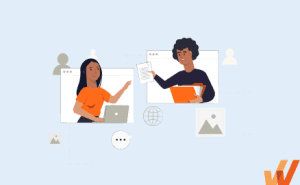10 Best Strategies to Train Your Millennial Employees (2024)
- November 3, 2022
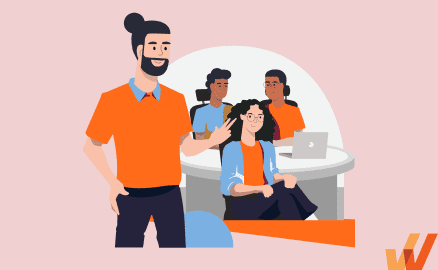
There is a lot of talk about Millennials in the workplace nowadays, as they’ve now entered the workforce and are expected to make up a large percentage of the global working population over the coming years.
Millennials, also known as Generation Y (Gen Y), describe anyone born between 1981 and the mid-90s.
There are many stereotypes about working with millennials – such as limited attention span, difficulty in engaging and retaining talent, tech-savvy, a sense of entitlement, etc. Many of these characteristics result from Millennials growing up in a generation with the internet, smartphones, and access to various information, collaboration tools, and resources.
So how do HR and L&D managers engage, train, and retain this generation with an entirely different way of learning, living, and working?
What are the best strategies for training Millennials in the workplace?
- Explore microlearning
- Spaced learning
- Create interactive training content in various formats
- Collaborate learning
- Incentive learning with gamification
- Use eLearning software & tools
- Implement a continuous learning culture
- Mentorships
- Mobile learning
- Learning while doing
Learning and Development for Millennials
HR and L&D leaders must realize that times have changed – and that Millennials are intrinsically attached to the digital world. They are tech-savvy, value inclusion, and want to find meaning in their work.
To unlock the potential of your Millennial employees – retain them in your organization – you must make considerable changes to your employee training and development approaches. Training strategies that worked for previous generations may be outdated and irrelevant for Millennials. The average Millennial enjoys collaboration and feedback in learning but resists traditional hand-holding.
The typical Millennial attitude towards technology is key to developing an employee training program suited to their needs and expectations. Finding the right balance of content, delivery, and social tools grabs Millennials’ attention.
Creating an L&D strategy for Millennials means creating training content that makes sense for their two most valuable resources: their time and attention. Unlike previous generations, Millennials embrace innovative learning and development trends such as self-paced eLearning, byte-sized learning modules, collaborative learning, etc.

10 Effective Strategies for Training Millennials in the Workplace
Here are a few millennial-approved strategies for creating and delivering learning content in the workplace to overcome common L&D challenges.
1. Explore microlearning
Considering the fast-paced professional world and the reduced attention spans of the digital workforce, traditional long-form training programs that occur annually or semi-annually are not enough for employees to keep up with industry standards.
To help your Millennial workforce achieve their professional and personal goals, consider implementing a relatively new type of employee training called microlearning.
Microlearning is a type of learning that breaks down learning content into small, bite-sized information modules. Smaller learning sessions offer the information necessary for learners to achieve a specific training objective.
Examples of microlearning training materials could be anything that can be comprehended quickly, for example, infographics, interactive videos, whiteboard animations, etc.
Microlearning works for Millennials because it takes only a small amount of the learner’s time, does not overwhelm them with a lot of information at once, and enables them to apply the lesson in real-time before they have a chance to forget it.
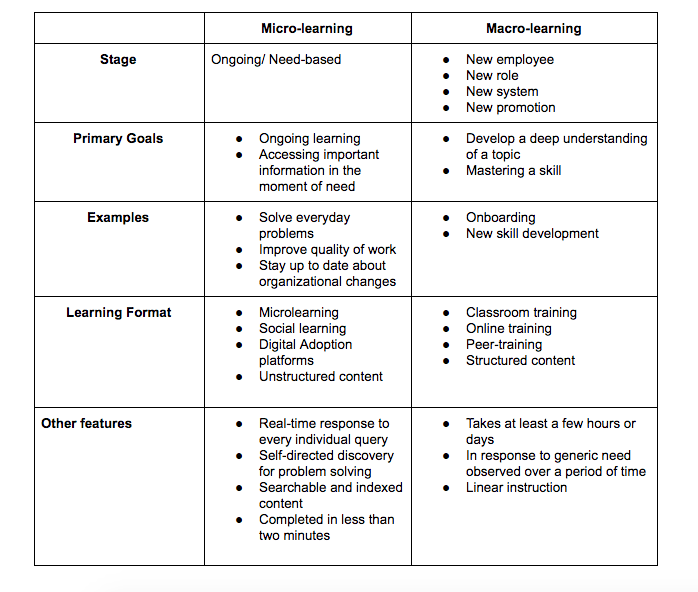

2. Spaced learning
Spaced learning is an effective learning strategy that meets the needs of the millennial workforce by helping them learn as quickly and efficiently as possible while minimizing the loss of knowledge that occurs with one-time learning.
Spaced learning breaks down extended employee training programs into several sessions or modules of shorter durations, with spaced intervals in between. Parts of these sessions are reintroduced multiple times over the next few days or weeks for learners to recall information, driving long-term knowledge retention.
Spaced learning consists of three intensive instructional periods, separated by 10-minute breaks or distraction material unrelated to the learning outcome. These three instruction periods present the same information, each with a different emphasis.
- Present: The “present” phase is a classroom or video lecture.
- Recall: The “recall” phase rolls out simple quizzes or assignments for learners to recall what they have learned.
- Understand: In the third session, learners apply their learnings to a problem or task. The breaks between input sessions give learners time to embed the knowledge in memory.
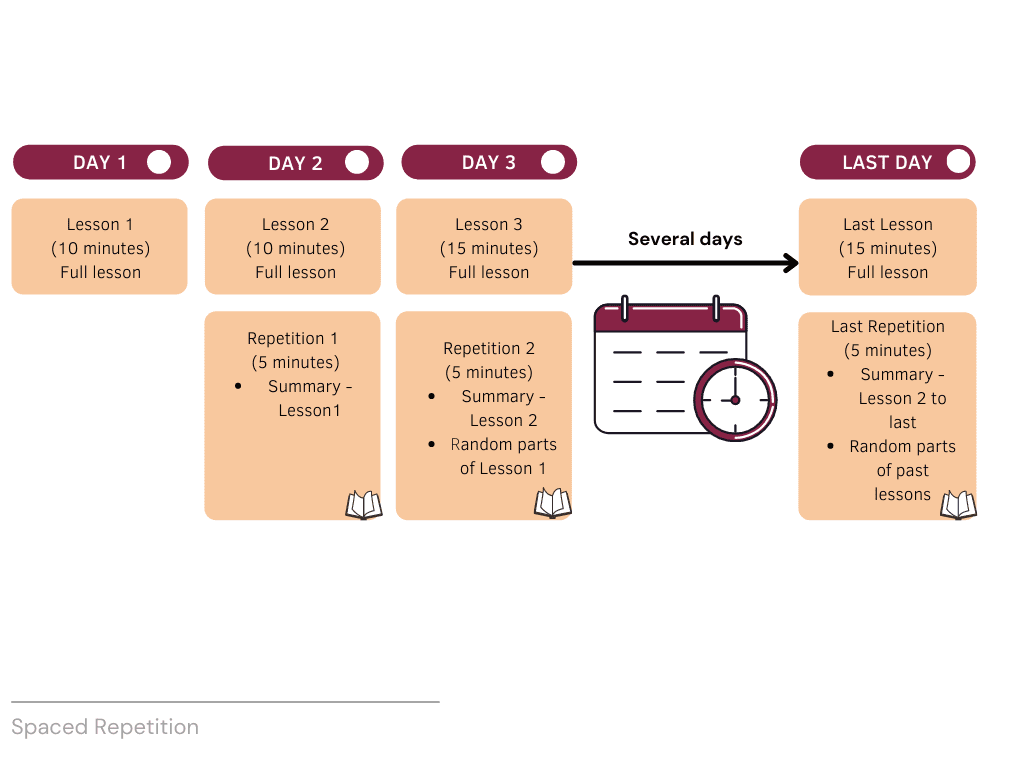

3. Create interactive training content in various formats
To engage the Millennial workforce, L&D teams must overcome the traditional training culture of monotonous slide decks and text-heavy manuals and instead embrace interactive training formats. Interactive training leads to higher productivity and performance by focusing on learner engagement.
For the Millennial generation, video training is the most preferred and effective way to deliver knowledge and consume content.
According to a study on video training content, employees are 75% more likely to watch a training video than read text-based training. This makes sense, as learning a new skill by watching a quick video is more convenient and less time-consuming than reading lengthy, text-heavy documents.
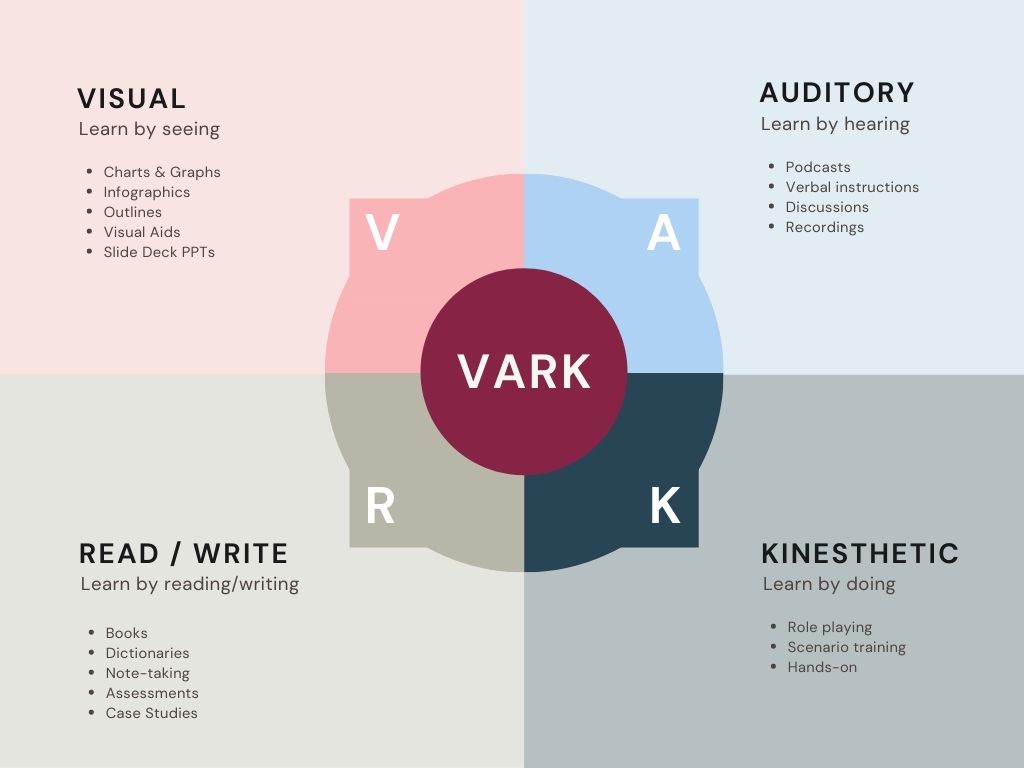

Visual representations make learners easily perceive information and store it in their memory for a long time. Furthermore, video training enables employees to learn at times convenient to them without hindering their workplace productivity.
Here are some other ways to make your online training courses more interactive:
- Incorporate an interactive element on each slide.
- Add digital storytelling to your courses.
- Include interactive 360° images and videos.
- Create simulated environments where training mimics real-world situations for learners to practice freely.
- Use gamification techniques by incorporating certain gaming elements into the training program.
- Ask questions and encourage discussions.
4. Collaborative learning
Collaborative training is a methodology where employees simultaneously share their knowledge and expertise, teaching and learning from one another. This technique helps enhance the overall training experience for employees by capitalizing on their skills, ideas, and knowledge.
Employees gain a better understanding as a group than they do as individuals by listening to other viewpoints, reframing ideas, and articulating their points. Collaborative learning increases employee engagement, employee satisfaction, creates a healthy environment, and builds a positive work culture. These factors help overcome the most significant employee retention challenge, making collaborative training an effective technique for training Millennials.
Collaborative training can be implemented via role-playing scenarios, learning communities, group sessions, lunch-and-learns, peer learning, etc., to reach more Millennials in the workforce.
5. Incentivize learning with gamification
Another tech-savvy way to engage millennials is to use gamification. The concept is simple – turn training into a game that rewards employees with prizes, badges, etc., based on the levels of training completed. Gamification turns routine real-life activities into incredible challenges to keep employees motivated and leads to higher levels of training completion and effectiveness among the Millennial workforce. They are the generation that grew up on video games, after all.
6. Use eLearning software & tools
Millennials are accustomed to using software and apps for everything. This is why L&D teams must leverage modern employee training software to create interactive, effective training materials for their millennial workforce.
Employee training software allows you to create and assign training and development courses, as well as monitor progress and track completion rates.
Different types of L&D software to leverage for your Millennial workforce include:
Corporate Learning Management Systems (LMS)
A corporate learning management systems (LMS) provides progress tracking, course organization, and training management features to scale training and development across the organization.
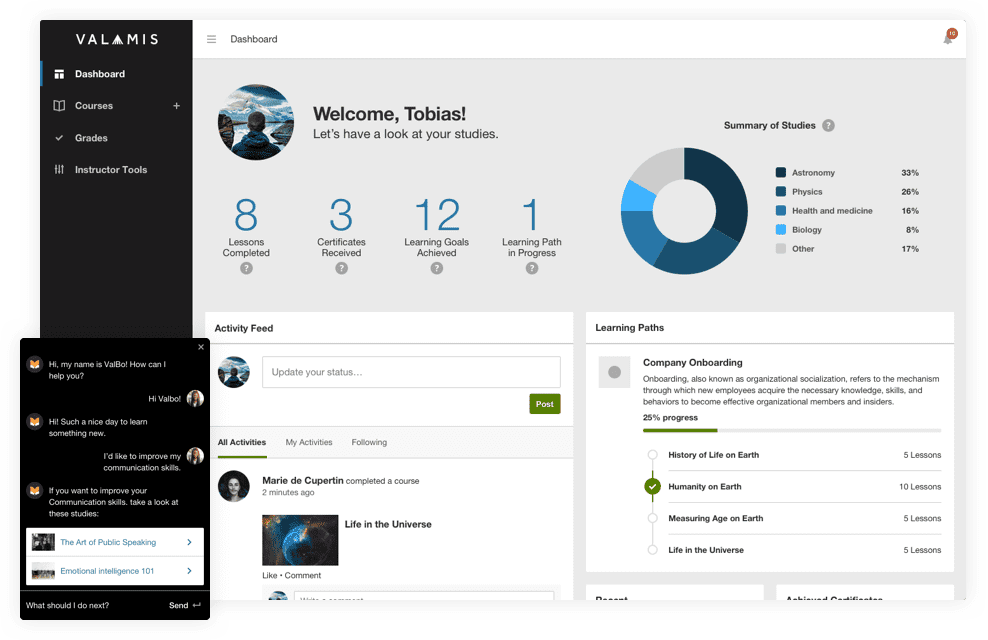

Digital Adoption Platform (DAP)
A digital adoption platform (DAP) provides organizations with a no-code tool to create in-app guidance and tutorials such as interactive walkthroughs, onboarding flows, task lists, smart tips, and knowledge bases directly inside software applications. This allows employees to be trained on all software tools and digital workflows that are crucial to their job, as well as continuously having their skills developed with contextual and just-in-time learning features



Knowledge Management System
Knowledge management systems provide a web-based, self-service center for employees to search for answers to company policy, benefits, or process questions. These internal knowledge base software tools act as internal wikis for companies and save time by decreasing HR questions and support tickets.


Video Training Software
As discussed earlier, video training is the most interactive way to deliver training for millennials. Video training software can be used to create, publish, and share training videos as well as measure the rate of training and learning progression.
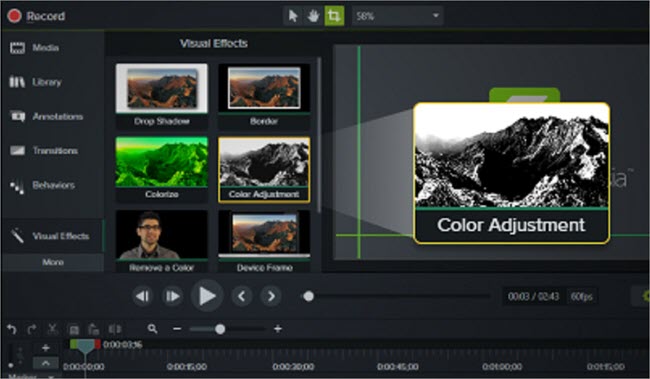

7. Implement a continuous learning culture
The new-age workforce values future security more than a paycheck, so providing continuous learning opportunities is a great way to show employees that you value your workforce and invest in their development.
Create a culture of continuous learning by building personalized employee development plans for your workforce. Employee development plans help engage employees, keep them productive and motivated to do their jobs, and make them feel valued and invested in their work.
✓ Thank you, the template will be sent to your email
8. Mentorships
Mentorship is important to Millennials. Their high ambition, willingness to learn new skills, and seeking feedback to improve contributes to their increasing value on mentors.
With this in mind, training programs aimed at Millennials in the workplace should incorporate one-on-one training sessions and professional guidance from their team leaders or supervisors.
Develop a structured program that allows them to ask questions and discuss their career options with their mentors. Such a program will give them specific goals to work towards and fulfill their need for connection. Also, this process creates a more productive and engaged workforce, which is highly beneficial for the company.
9. Mobile learning
Millennials are tech savvies who seek convenience and work-life balance to stay satisfied with their jobs, making your training content accessible for mobile devices needs to be one of the core components of training Millennials. Mobile learning is a much more enticing method for Millennials than conventional methods of learning as it enables them to access training content whenever and wherever they want.
10. Learning while doing
Learning in the flow of work is an intelligent mix of micro and macro learning powered by in-depth employee data tracking and analytics.
Learning in the flow of work enables learners to find the information they are looking for whenever they desire it, on whatever platform, and in the right context. This approach ensures minimum disruption of work and maximum productivity.
Implementing a digital adoption platform such as Whatfix enables learning while doing. The xAPI-powered platform helps understand employees’ capabilities and how they consume information to deliver the right learning experience. Such data-driven and targeted learning content provide new users direction and tools to get contextual answers to their questions – in the moment of need.
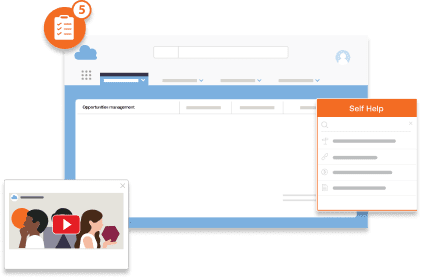



By now, we know Millennials have very different needs and expectations than the generations before. These young adults are motivated, free-thinkers who want creative independence and are passionate about their work.
Therefore, organizations must modify their current training programs to offer training that makes Millennials feel engaged. Modern eLearning requires creating and curating custom learning content, on-demand microlearning, and social learning. You need something more powerful than a learning management system (LMS) to achieve all of this.
You need to implement a digital adoption platform like Whatfix that enables learning via interactive walkthroughs, videos, and self-help menus and allows you to train employees on demand while providing insights to measure training effectiveness.
Whatfix DAP enables you to create scalable employee training flows built directly into your website or enterprise applications – allowing employees to learn in the flow of work. It provides segmented, contextual training and development self-help resources to employees in the moment of need, with analytics to measure and improve your training processes.
Schedule a free demo with us to learn more about training millennials with a Digital Adoption Platform.
Thank you for subscribing!
